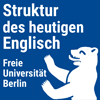7.2 Examples
7.2.1 Voiced and voiceless consonants
Another example is voicing of plosives in Germanic languages. Traditionally, the differences between /p/ and /b/ is described as one of voice.
- voiceless plosives: /p, t, k/
- voiced plosives: /b, d, g/
Alternative terminology: fortis/lenis, strong/weak, aspirated/non-aspirated
Dichotomies like the ones above, however, never capture the full complexity of a linguistic phenomenon.
Voice onset time
English
----|x~~~~~~~~~ /b/
----|---x~~~~~~ /p/
Russian
x~~~|~~~~~~~~~~ /b/
----|x~~~~~~~~~ /p/
Mandarin
x~~~|~~~~~~~~~~ /b/
----|x~~~~~~~~~ /p/
----|-----x~~~~ /pʰ/7.2.2 Expanding the model
Our model of voicing is becoming more and more complex. Even voice onset time is not the full story. You can also observe specific patterns in the phonological environment such as assimilative voicing, or vowel length of adjacent sounds. In a Russian accent, the phrase it’s better might be pronounced as [ɪdz betə] as opposed to a more native [ɪts betə]. This pattern is clearly connected to the different voice onset times, but is not a logical consequence. We can enrich our model even more:
- devoicing of following continuants (progressive assimilation)
tree [tɹ̥iː] - lengthening of preceding vowels
bet [bet]—bed [beˑd]
beet [biːt]—bead [bːˑd]
7.2.3 Different models for different purposes
Models differ substantially in focus and the degree of detail. A simple dichotomy like voiced/voiceless consonants and long or short vowels is only a rough approximation of reality but at the same time, it could be just enough for a certain context. In fact, the very purpose of a model is to reduce complexity. Let’s consider the following applications.
- Teaching orthography to native speakers
- Teaching pronunciation to language learners
- Explaining historical sound changes
- Articulatory phonetics
- Speech recognition
In native language teaching, the aim is often to teach spelling conventions. Since a native speaker doesn’t normally need any instruction in how to produce speech sounds, any categorization that does not lead to confusion will do in order to distinguish vowels or consonants. The issue in foreign language teaching, on the other hand, is a completely different one. Students might need instruction on how to produce the difference between the sound categories. Here the level of detail needed even depends on the native language of the student. If you teach English to a German student, the simplest of the models above might be enough since the patterns in the languages are very similar. However, a Mandarin or Russian speaker might profit from a more complex model to explain the difference. In a linguistic context, the models are of course much more complex, but even here you’ll find differences. A historical linguist focusses on different aspects than a phonetician. Then there are purposes like speech recognition where the type of model might become yet more detailed. When trying to capture speech with a computer, you need to model the sound differences with frequencies (as in pitch). This most extreme model makes it useful for its specific task but renders it useless for most of the others.

